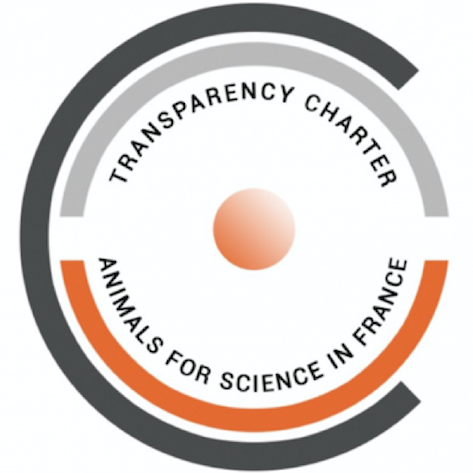On 22 February 2021, thirty universities, research organizations and biomedical companies in France signed the “French transparency charter on the use of animals for scientific and regulatory purposes”. ( link)The charter is supported by the French Ministry of Higher Education, Research and Innovation and is an important part of a strategy to make transparency a key element in modern animal research in Europe. Signatories include leading institutions such as the Sorbonne, the public universities of Paris, Marseille and Strasbourg, and large corporations like Sanofi, Bayer and Charles River.
French Transparency Charter: Why openness is key for animal research in Europe

France is the fifth country in Europe – after the United Kingdom, Spain, Portugal and Belgium – to sign a national agreement committing its life-science community to speaking openly to policy makers, the media and the general public about the use of animals in biomedical studies. The leaders of INFRAFRONTIER partner institutions in France including the Centre National de la Recherche Scientifique (CNRS), the Institut national de la santé et de la recherche médicale (INSERM), the University of Strasbourg, the Institut Pasteur and Institut Clinique de la Souris (ICS) have joined their colleagues in committing themselves to the new charter.
As coordinator of the national research infrastructures PHENOMIN and CELPHEDIA, Yann Herault is among the signatories of the agreement. Herault, who is also director of the ICS, is a long-serving INFRAFRONTIER council member and the newly elected vice chairman of the International Mouse Phenotyping Consortium (IMPC). In our interview, he explains what the charter means for the biomedical research community in France and beyond.

Yann Herault: “INFRARONTIER should pave the way.”
Yann, how long did it take to achieve this wide-ranging support for the transparency charter in France?
Yann Herault: It took us several years – and to be honest, it was a lot of hard work. Numerous people helped ensure that so many organizations from the academic and private communities signed up.
What were the biggest obstacles the French scientific community had to overcome along this way?
Most of those actually working in animal research didn’t hesitate to push this initiative forward. Still, there were serious discussions about why it is no longer appropriate to stay hidden within our institute and behind scientific papers. There were also serious questions about what exact steps we should take in order to become transparent. And of course, we had to face some fears: “Should we really go public with such a delicate topic – what would happen?”
You head two national research consortia and the ICS – all focused on biomedical research with mouse and rat models. Do you personally expect an impact on the daily business of these institutions?
Herault: I don’t foresee any major change in our current daily work. We implemented a culture of animal care long ago, and we are used to respecting all aspects of welfare and ethics every time we use animals for scientific purposes. We are ready to follow the transparency rules in the charter and to answer any questions about why we use animals for basic or clinical research. We will also facilitate access to information about this, and will continue to disseminate information about our research. We will produce an annual report outlining the progress made.
With three of Europe´s biggest countries – the UK, Spain and France – now committed to similar transparency rules about animal research, do you think this will have an impact on a pan-European consortium like INFRAFRONTIER?
Herault: I am convinced that this is a major step forward – not only for France, but also for Europe as a whole. At INFRAFRONTIER we all need to move in the same direction – and I think we should even pave the way. We have an obligation to support our colleagues in installing similar transparency rules in their home countries.
The four commitments of transparency
included in all national transparency charters on animal research:
- Speak with clarity about when, how and why animals are used in investigation.
- Provide adequate information to the media and the general public about the conditions under which research using animals is carried out and the results obtained from them.
- Develop initiatives that generate greater knowledge and understandingin society about the use of animals in scientific research.
- Report annually on progress and share experiences.